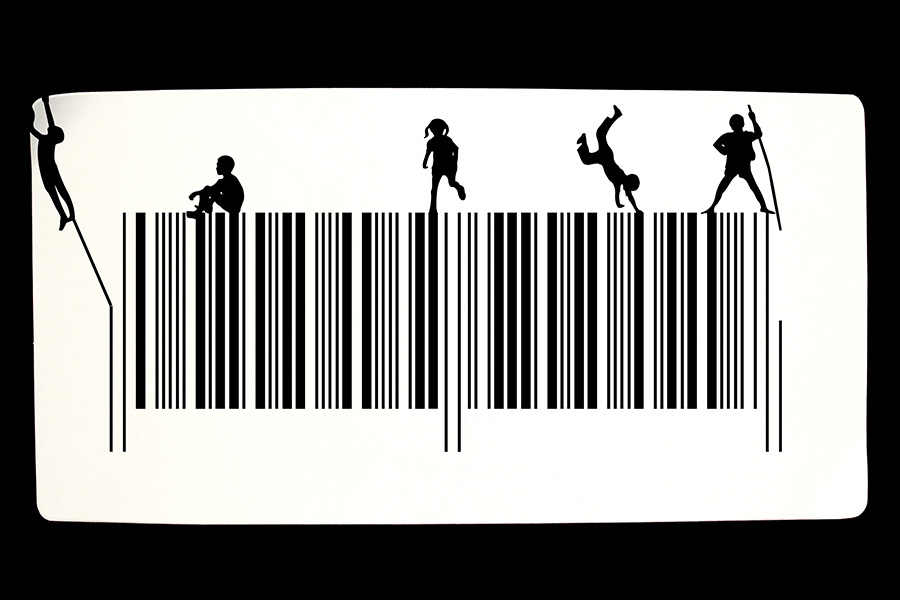Apr 06, 2021 by Mark Dingley
As we near the humble barcode’s 50th birthday (coming up in April 2023), many of us may be wondering how many businesses actually understand this symbol and everything it stands for. Most importantly, do you understand its value in everyday business operations?
The familiar beep of a barcode passing through the register is heard somewhere around five billion times around the world every single day says global standards organisation GS1. It all started back in 1973, when industry leaders came together to choose a single standard of product identification. It wasn’t long before the barcode showed it had value beyond speeding up checkouts at the supermarket – over the years, it has become a common way for trading partners around the world to identify, capture and share information on products, locations and so on. We’re often asked how barcodes work at Matthews, which is why we’ve put together a new FAQ section to answer your most pressing questions. There are a few interesting facts that we think every business should know about barcodes:
A ‘barcode’ (or ‘bar code’) is an image that is used to represent data and that is read by a machine. A scanner decodes the image, sending data back to a computer system where it is processed and interpreted. Barcodes can be used to identify a wealth of information - including trade items or products, locations, logistic units (such as cartons or pallets), and assets – in a wide range of industry sectors.

Retailers here in Australia have adopted the GS1 system of barcoding and numbering. Whether you’re selling your products onto a retailer or into the healthcare system, for example, you’re going to need a barcode. Some major retailers (like Coles and Woolworths) won’t actually accept products that don’t have GS1 barcodes.
Barcodes help both you and your customers to keep track of sales, stock, orders and price information. Using them reduces costs as well as increases accuracy and efficiency in your supply chain.
A study conducted in France titled ‘17 billion reasons to say thanks’ (Vineet Garg, Charles Johnes and Christopher Sheedy) found that barcodes actually lead to an annual savings of 6.59% of retail revenue.
Keep in mind that not all barcodes are the same – different types fit the needs of different applications. In Australia, the types of barcodes you can choose from include EAN/UPC, GS1 DataBar, GS1-128, ITF-14 and GS1 DataMatrix. The checkout systems in retail stores use EAN/UPC barcodes, which represent the identification of the item. Logistic applications tend to use GS1-128, which is a barcode designed to encode the item ID and additional information (such as the lot number or best before date). Learn more about barcode types on the GS1 Australia website – or ask us.
A barcode is designed to uniquely identify your product using a product identification number known as a Global Trade Item Number (GTIN). The stripes you see in a traditional barcode are the graphical representation of the GTIN; this number is printed below the image. These days, barcodes also come in other patterns – dots, concentric circles, and even hidden within images.
Barcodes are read by optical scanners (known as barcode readers) or scanned from an image using special software. Once the barcode is scanned at a point-of-sale (POS), in the warehouse or at a checkout counter, the information is decoded and sent to a computer where it’s then interpreted and processed.
If your products are exactly the same (in size, shape, colour, weight, flavour and so on), the same barcode number – known as a Global Trae Item Number (GTIN) - must be used.
If a product is slightly different, a different barcode number must be used so that similar products can be distinguished from each other. Even a small change in size or weight means that a new barcode is needed. The only thing that does not affect barcode numbers is packaging design changes.
Generally speaking, no. Simply put, the lines and bars of a barcode represent the GTIN that uniquely identifies the item. All of the information about the item is actually contained in a computer database and can be retrieved by scanning the barcode (at the checkout or in the warehouse).
Before you can obtain a ‘graphic’ barcode, you need to first obtain the numbers that go inside it. GS1 Australia is the only organisation who is authorised to register and issue barcode numbers (or GTINs) here in Australia. They make sure that the barcode numbers you receive are unique from other numbers and that no other business will be authorised to use those numbers on their products. In order to have barcode numbers registered to your business, you must be a member of GS1 Australia (visit their website for more information on joining).
It should be noted that GS1 Australia doesn’t actually print barcode images or provide you with the digital barcode files. Matthews is a GS1 Strategic Alliance Partner, which means that we can help you to put your barcode on your product once you’ve been issued a number.
If you want to know more about barcodes, visit our FAQ page. If you still have questions that haven’t been answered, please get in touch and we’ll do our best to provide an answer.
Keep in mind that barcodes need to be scannable every time – see our guide to proper barcode quality and grading here.